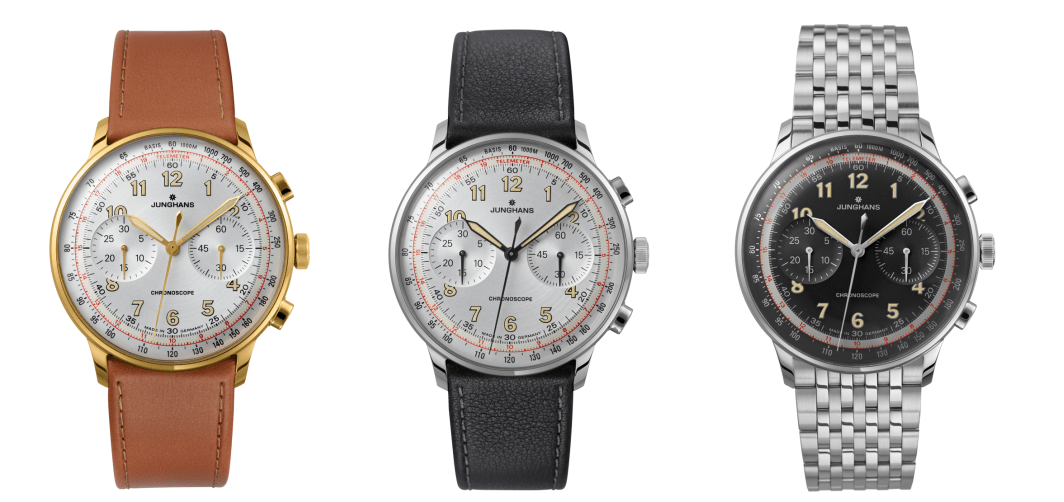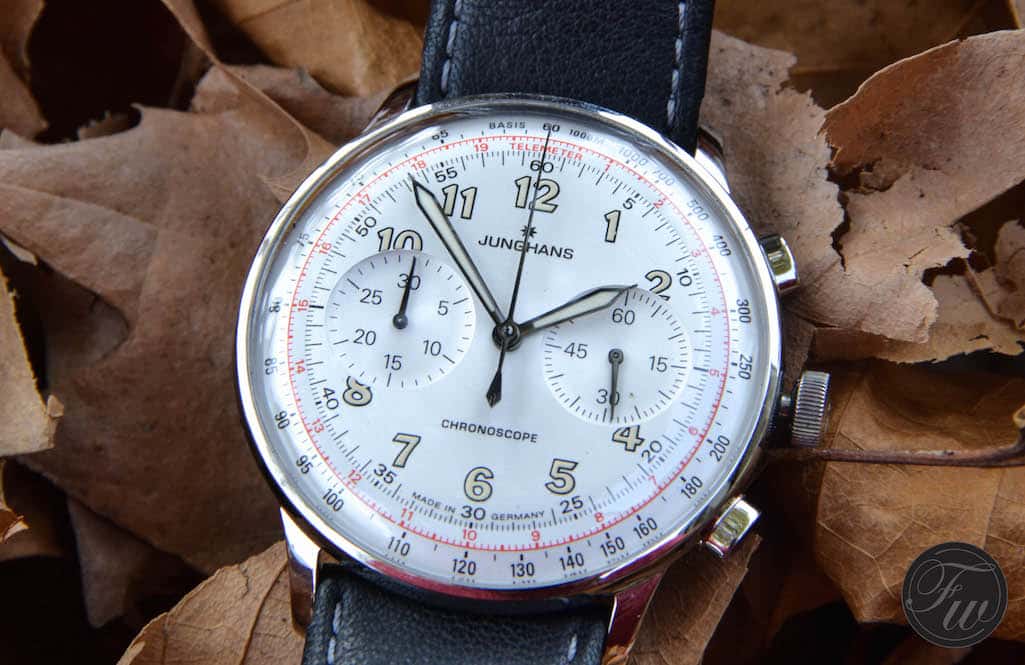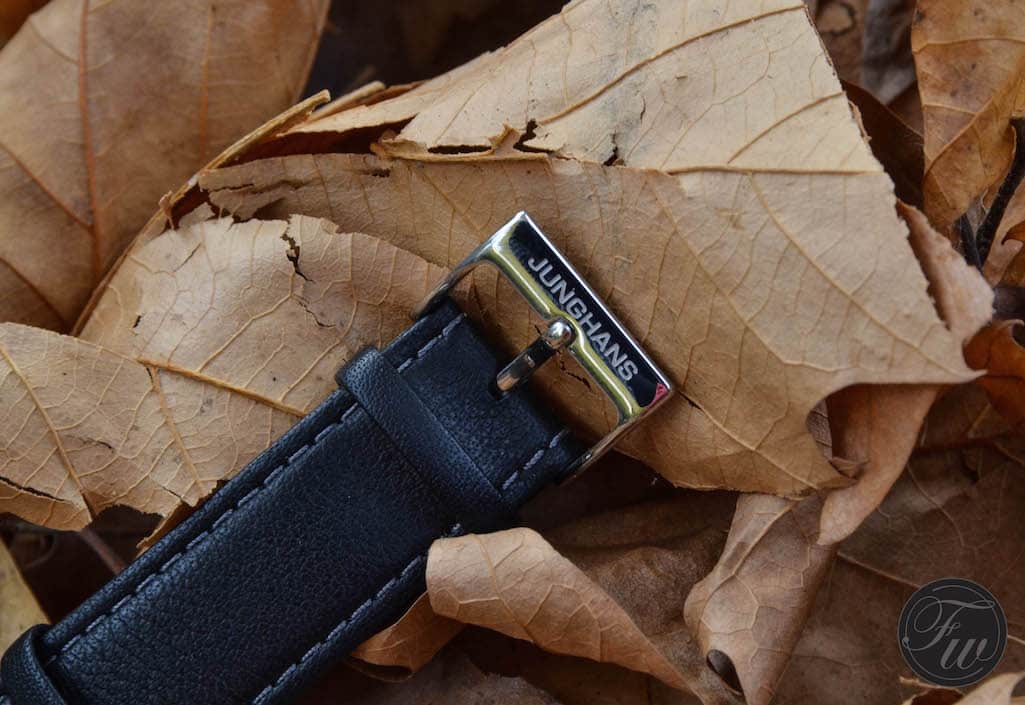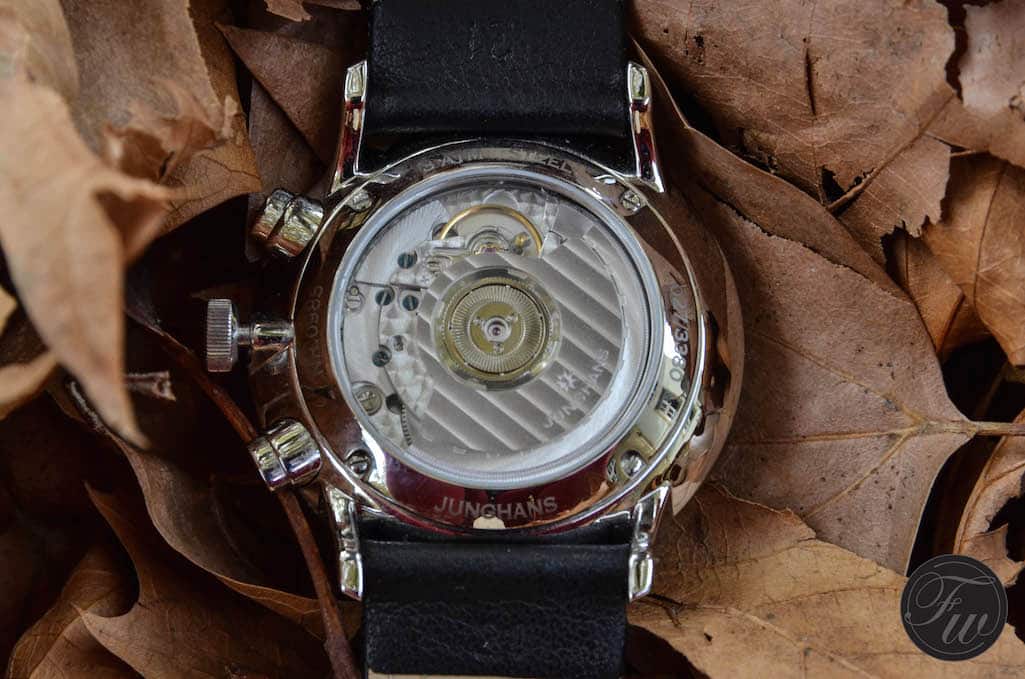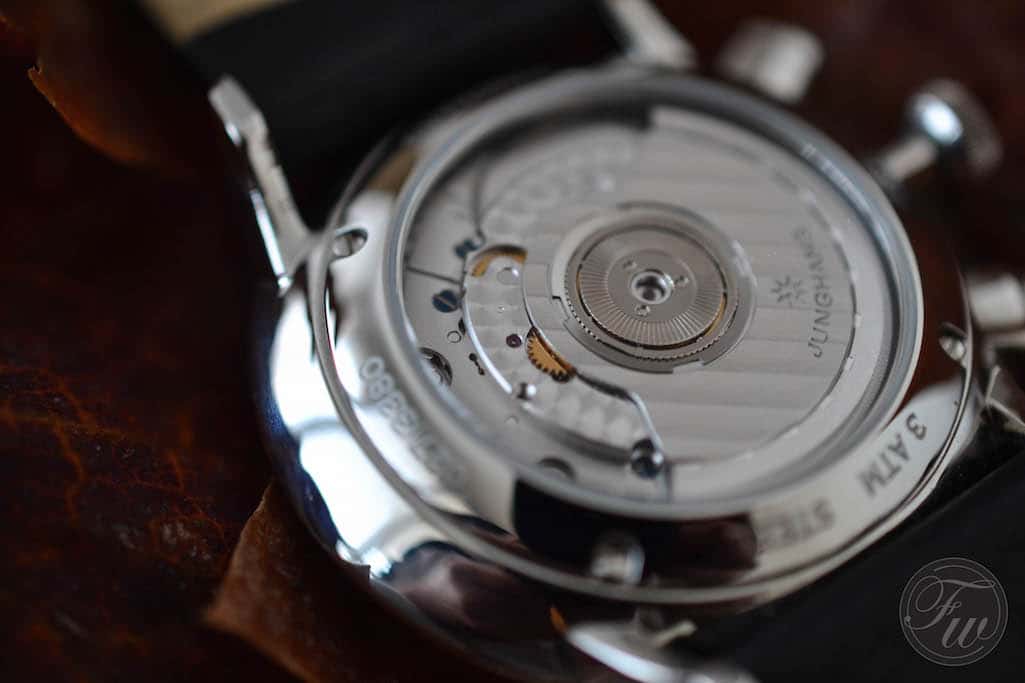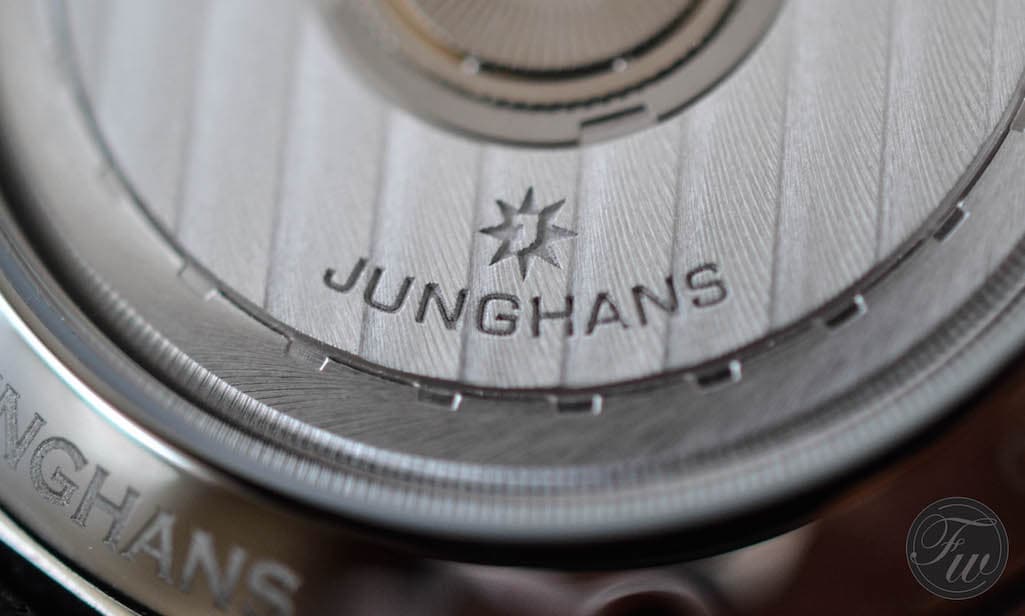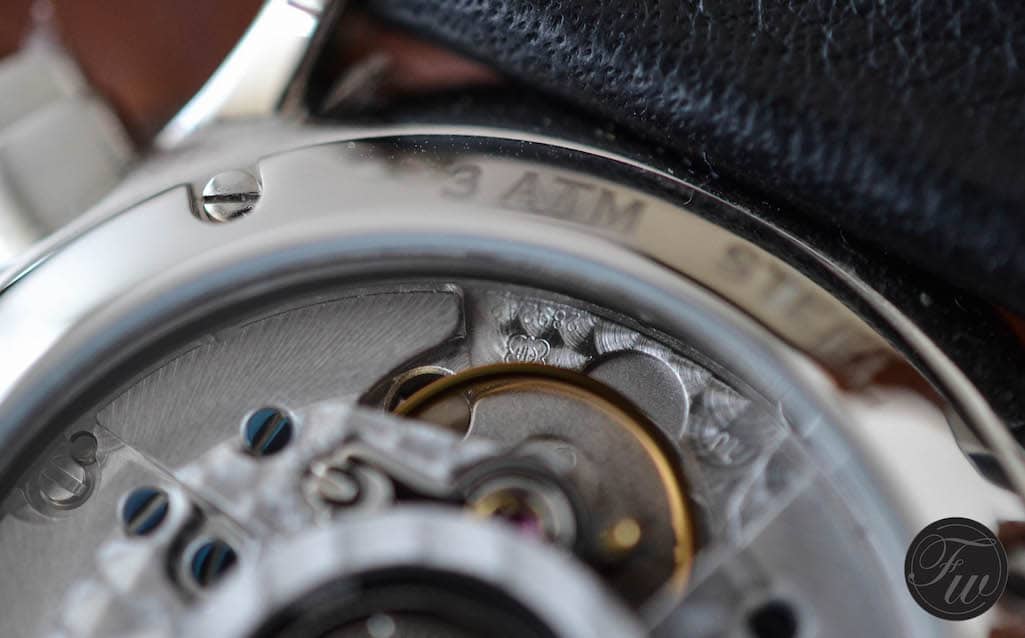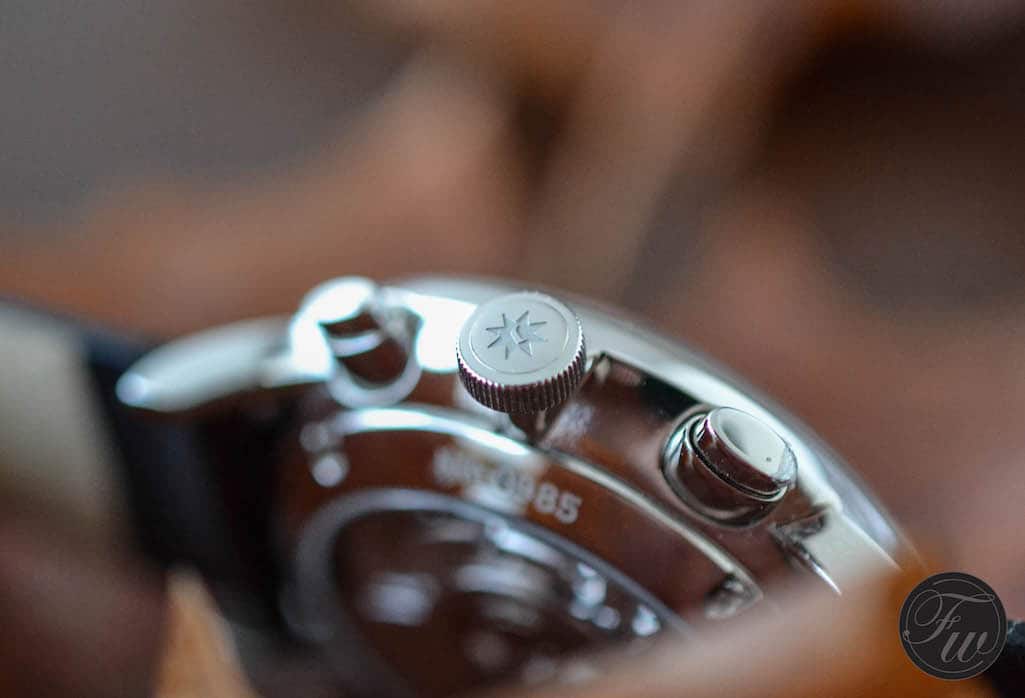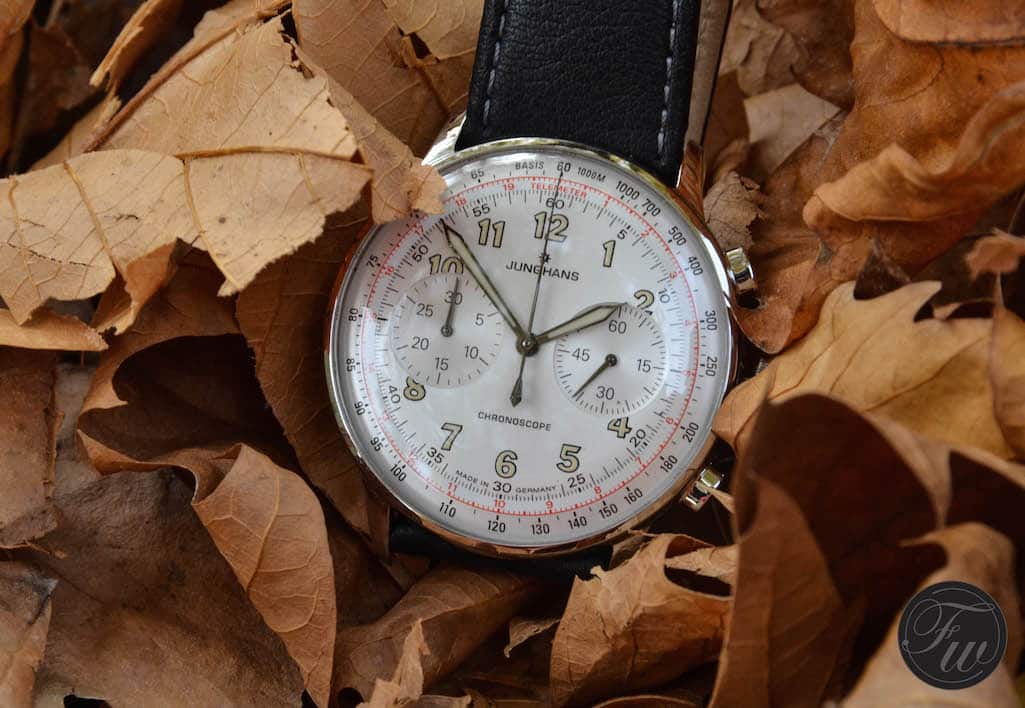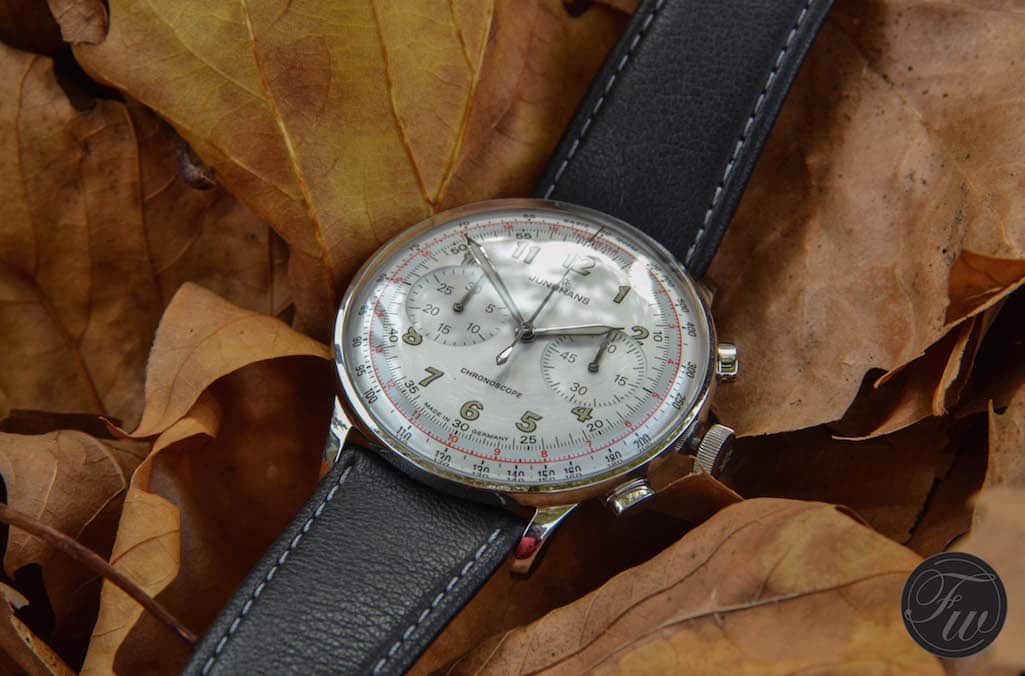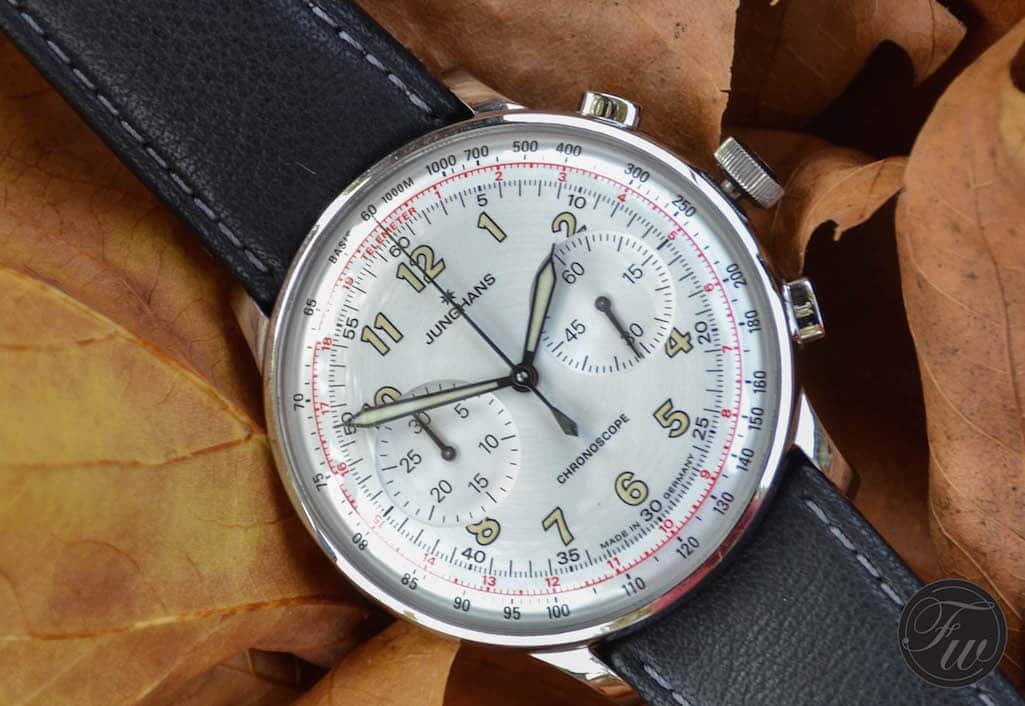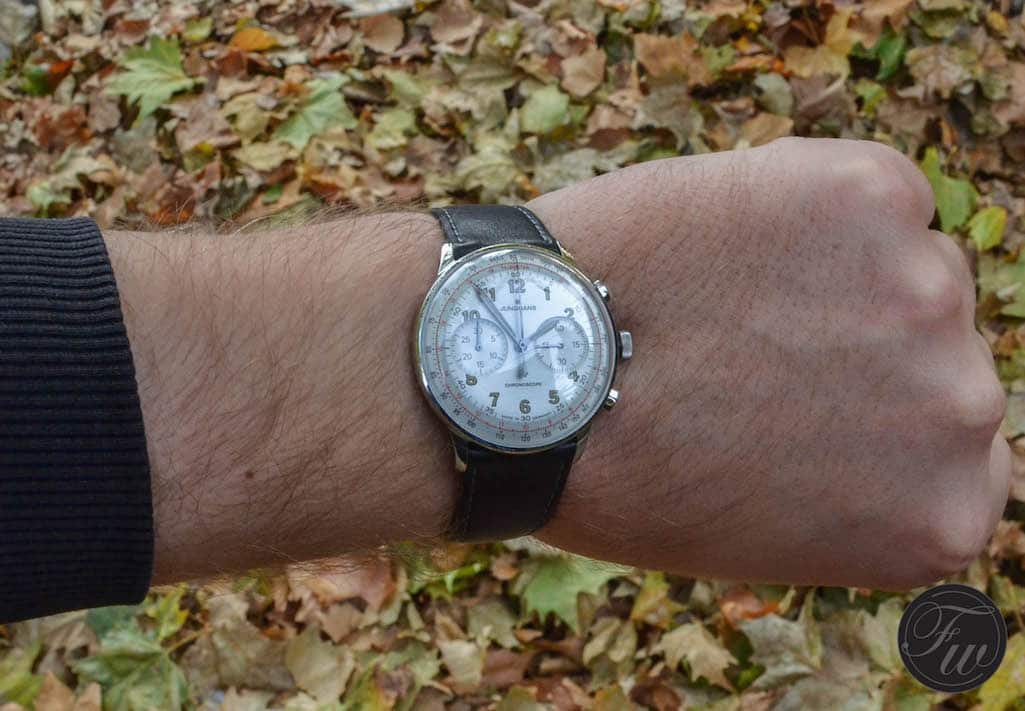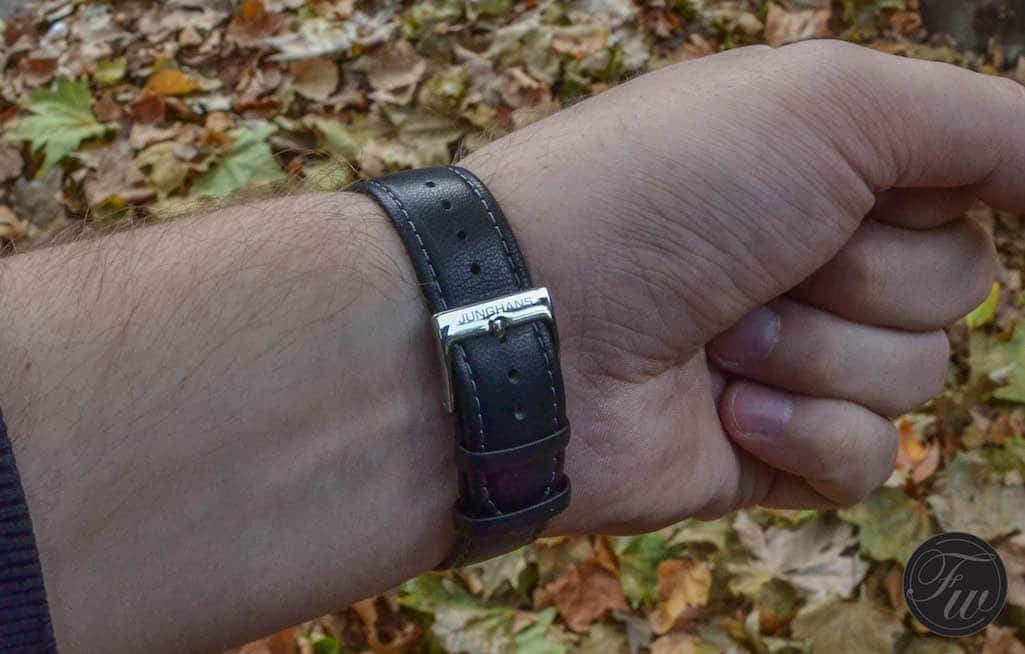Junghans Meister Telemeter a Hands-On Review
As some of you might remember not too long ago we published a photo essay on our recent trip to Junghans. They were presenting their new chronograph, the Meister Pilot and Fratello Watches was there to give an impression on the piece firsthand. It was a memorable weekend filled with vintage cars, planes, watches and amazing people from all over the world. I managed to have a few words with the kind people at Junghans (thank you for the opportunity Anne-Katrin) regarding some watches for a review and while we could not put our hands on the new pilot chrono (yet), we still managed to get a few watches in. I realized that we here at Fratello Watches have never actually dealt with Junghans and while many German brands have been covered in the past, I feel that Junghans should be introduced to the wider audience as well. Their pieces are lovely, exceptionally well made and very reasonably priced. The history of the brand is rich and filled with interesting clocks and watches. One of them is the grandfather of today’s subject. So it was only obvious that the company took one of their vintage chronographs and resurrected it to create the Junghans Meister Telemeter, the topic of this review.
Junghans
While We have love for the German brands and cover watch houses like A. Lange and Söhne and Nomos pretty frequently on the site, we lack some cool content of smaller brands, like Laco, Stowa or in this case Junghans. This is something we have to work on and I can promise you some more coverage on these brands in the future. However, let’s concentrate on the brand we are reviewing today. Junghans is one of the oldest and most prestigious companies in Germany. 1861 was the year Erhard Junghans and his brother in law established the company but it took them a few years to produce their first clock (not watch), which was introduced in 1866. Their headquarters in Schramberg is one massive building complex that at one point in time housed over 10.000 employees. Up until the 1930‘s they manufactured clocks and pocket watches. The next milestone important to us is 1946. This was the year the plans of their very first chronograph movement, the caliber J88, was penned. This is the caliber used by the grandfather of the Junghans Meister Telemeter. It also was installed in their bundeswehr chronograph that served in the West-German military in the 1950’s. This military watch, by the way, was the inspiration to the new pilot chronograph we had the chance of seeing in Schramberg a little while ago. Moving on through the history of Junghans, we arrive to 1961 which I think sealed the future of the brand. They asked Renaissance man Max Bill to design a simple and timeless watch. He succeeded in creating the Junghans Max Bill, a watch that more or less stayed the same until today proving that the design is eternal. This name and look is inseparable now and Junghans has a whole line dedicated to this watch. It is without a doubt the most successful of all models they produce. Towards the end of the 60’s the company turned their attention towards quartz watches and in 1970 they introduced their first quartz movement in the pre-production of the first German quartz wristwatch. Only a few years after that, for the 1972 Olympic Games in Munich, Junghans released their Olympic line to celebrate their partnership with the games as the official timekeeper (way before Omega). The 1990’s were all about quartz watches which led to the patent of the multi-frequency radio-controlled movement developed and patented at Junghans. The watch with this movement receives time signals in various countries and adjusts itself automatically. In 2008, the Ernhard Junghans collection was released to pay homage to the founding father, and only a year after that the company was sold to Dr Hans-Jochem Steim starting a new era in Junghans’ history.
Now that we know a bit more about Junghans let’s look at the watch in details. I must admit I was pretty excited to receive the Junghans Meister Telemeter. I think I’ve covered different timepieces in the price range of €1000 all the way up to €30.000+ so it is really not about how much the watch is worth. It is more likely that little “switch” that gets turned on in your head by a watch. If you are reading this I’m sure you know the feeling. I am fortunate enough to have the possibility of trying watches for a few weeks before I buy them, but we are here to give you, dear reader, our first hand opinion so that you’ll know as much about the watch as possible even before you walk into the dealer to have a look at it.
Case, Movement, Strap
In my opinion, Junghans did a really good job with this reedition. The silver dial version as well as the black looks vintage and modern at the same time and this appealed to me. I received the silver version on black leather strap and Junghans buckle: no deployant for this model I’m afraid. The first impression after taking it out of the box is how large it looks and how light it actually is. The Junghans Meister Telemeter measure almost 41mm but since it’s only 12.6mm you can easily hide it under your shirt cuffs. I never compared the black version with this one in terms of wrist presence but the fact that the Tachymeter, Telemeter and Chronograph scales are all printed on the dial, and hence no need for a physical bezel, makes the face of the watch look even bigger. The back of the case narrows toward the center of the case back so while the front is around 40mm the case back is only 34mm. This is the reason why both the crown and chronograph pushers’ stems have little chambers that drive them out all the way to the side of the rim of the dial. The display case back lets us admire Junghans’ self-winding J880.3 caliber with beautiful Côtes de Genève decoration – or as they call it in Germany; Glashütte Ribbing – on the oscillating weight. The caliber is based on the ETA 2892 but modified by Junghans with a Dubois Depraz 2030 chronograph module. The movement is decorated with perlage and blued steel screws and it has 45 Jewels wit 42 hours of power reserve. As you can read from the texts around the display window the watch is water resistant to 3 ATM (30m), made of steel and its reference is 027/3380. Speaking of case materials Junghans also offers the Meister Telemeter with a steel PVD coated gold colored case but only with the silver dial. The crown sports the Jungahns logo; a star with a J in the middle. The shape of the pushers are also inspired by the original version of this chrono, they are flat and long just like the old version’s. I’ve already mentioned that this model came on a black leather strap. The gold colored version comes on the same type of strap only in caramel brown and the black dialed version on a metal bracelet. The leather strap is thin but comfortable, very soft and does not wrinkle. The only thing I don’t understand is the size which is 21mm. Not 22mm or 20mm like most other watches have but 21mm and this could cause problems if you want to swap to an aftermarket strap. I think my list of negatives is empty though.
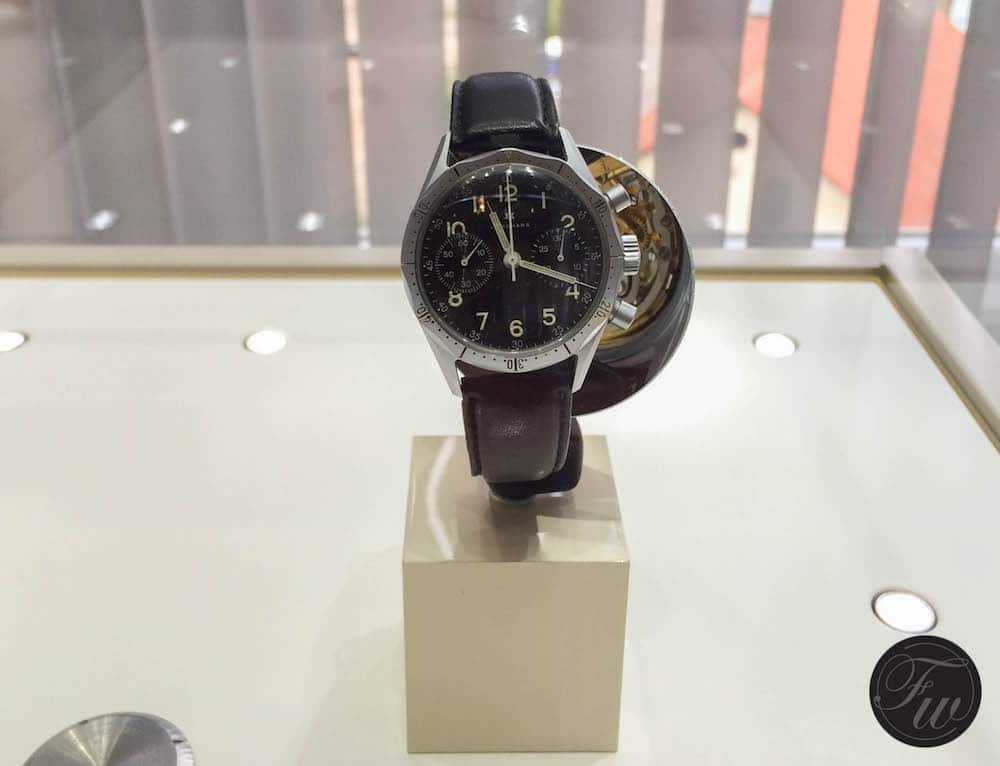
the Junghans Bundeswehr chronograph equipped with the caliber J88 on display in the Junghans Museum in Schramberg
Dial
As I already mentioned it the watch is available with 2 dial colors. I chose the silver because 1, I have many chronographs with black dials and I wanted to try a white dialed chronograph 2, I felt this color combination reflects the vintage feel of the time piece better and 3, I wanted to see how this light color works size-wise i.e. isn’t it too large for even my wrist size. Well, all I can tell is that this watch fits like a glove, the dial does not feel or look too large – as far as I’m concerned. At first glance the dial actually looks white, if you take the watch in hand and examine it closer would you see the circular motif on it and that it’s more of a very light silver tone. Despite all the numbers and scales it does not look crowded at all; it’s very easy to read the time thanks to the yellow aged-looking super luminova coated, black sword hands and the huge number indicating the hours. Other than 3 and 9 all the other numbers are visible with the aforementioned thick yellow luminova. It’s worth mentioning that little detail that is just like the original version’s dial. This dial was also designed in a way that the sub dials would cut into the numbers 8-10, and 2-4. The chronograph register at 9 o’clock is a 30-minute counter and the register at the 3 o’clock is the continuous seconds counter. Framing the 60-minute indicator on the rim of the dial you can find the Telemeter scale printed in red. This is the scale that gave the name to the model and to be fair it is a feature most of us won’t have to use nowadays. A telemeter scale is designed to measure the distance of an event that can be seen and heard. As an example in case of a lightning strike you start the chronograph when you see the flash and stop it when you hear it. The Chronograph hand will show you the unit between you and the event, this unit can be in miles, kilometers (like with our Junghans) or any other similar units of distance. Further out on the dial is the Tachymeter scale printed in black. It sounds like a busy watch face with all these added functions but if you look at the photos you realize that it is not really the case. Everything is clear and visible yet you don’t have a feeling of an overcrowded dial. Just below the 12 you see the small and elegant Junghans logo with the name and just above the 6 the name of the model family; Chronoscope. The 30th second index for the chronograph just below the 6 o’clock is accompanied with the ever-present Made in Germany trademark advertising that this watch was indeed produced by one of the oldest watchmaking countries beside Switzerland.
Difference between chronoscope and chronograph
We love chronograph watches. It is probably the most common complication in a watch and as far as I’m concerned it adds something special to the timepiece. I love time only watches too but give me a chronograph any day and I’m happy like a child in a candy store. But then why is this watch that actually looks like a chronograph called a “chronogrcope”? The word “chrono” as you might know comes from Greek and it means “time”, of course. The word “scope” is also Greek and it means “to show” so technical Chronocope stands for “Timeshowing” while following the same thread of thoughts we see that Chronograph then stands for something like “Timewriter” as “graph” another Greek derivative stands for writing or drawing. The reason behind this misusage of the phrase can be explained by a simple mistake. Until a few years it was believe that the first chronograph was built by Nicholas Rieussec in 1821. This was an instrument where a small ink dot was put on a rotating disc when the time measuring would be stopped hence “writing” the time. It so happens that we were wrong and the first chronograph was made by Louis Moinet in 1816, under the name ‘Computeur de Tierces‘. This pocket watch-like instrument didn’t write the time but showed it. Hence, if we would like to be truly original to the roots of time measuring, we should start using the word Chronoscope instead of Chronograph. However I doubt it will ever happen though it certainly widens your knowledge of watches and gives you a cool topic of “Did you know…?” In case you want to show off in front of your friends.
Overall
I think from the length of this article you already see that I really enjoyed having this watch for a good few weeks. I think the design is great, true to the heritage, yet up-to-date. The size, weight and overall look and feel of the Junghans Meister Telemeter is absolutely brilliant and even the boring black leather strap can’t overshadow this. The price is between €1600 and €1990, which keeps it under the 2k mark. For this amount of money I can comfortably say that it is a lot of watch for the money. I can encourage you to pay a visit to Schramberg if you ever pass by the Black Forrest and witness firsthand where and how these wonderful pieces are made. I think if you are in the market for a highly affordable dress watch with some added features and a classical look, this should be a top contestant. Don’t mind that it’s not Swiss made as I can assure you, like many German brands nowadays, it can be compared to their Swiss counterparts any time.
For more information on this and other Junghans watches please visit their site, here.

